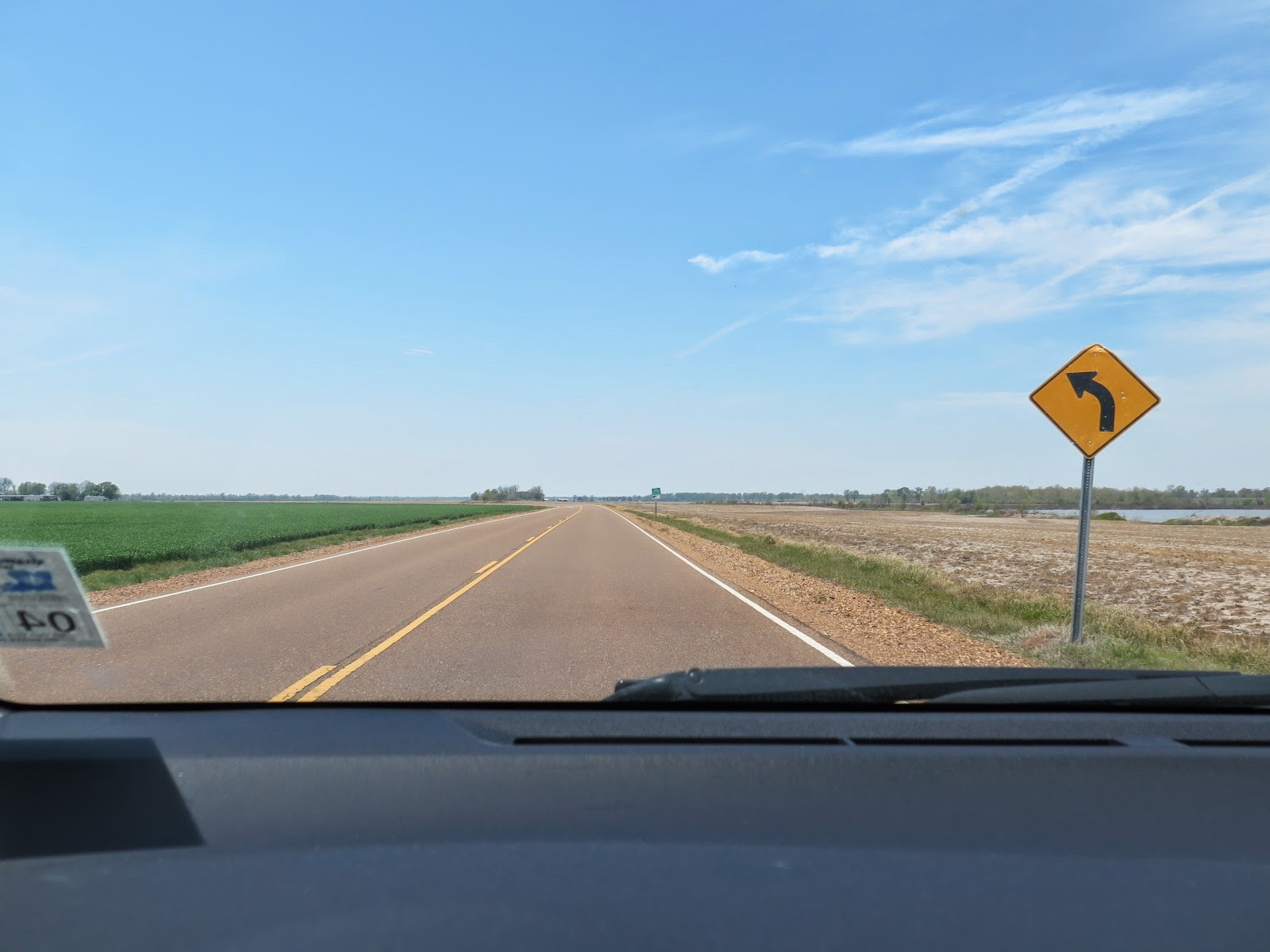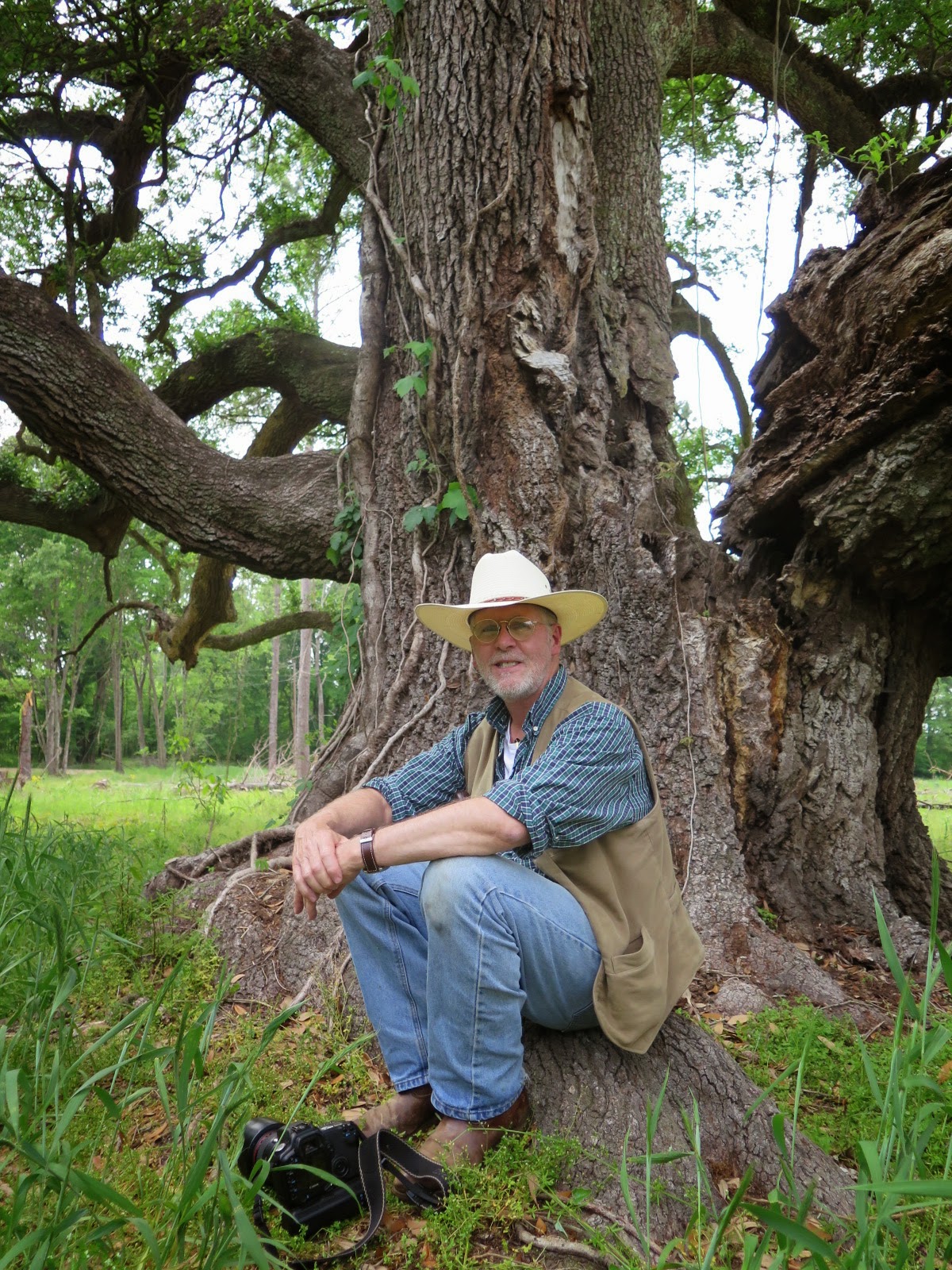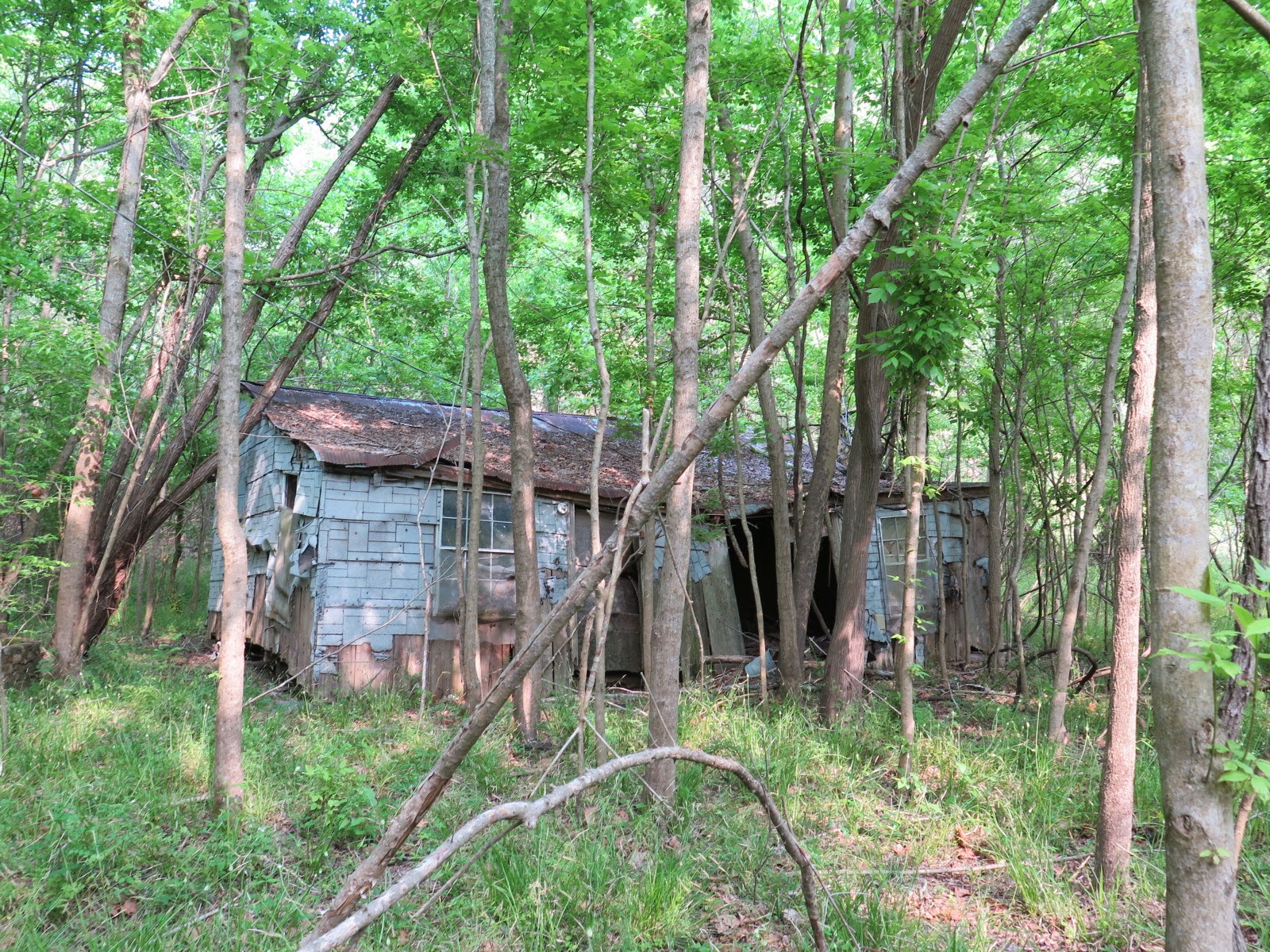So I bid farewell to Memphis and commenced my road trip south towards New Orleans, roughly following the Mississippi River. This journey would take me down the historic Highway 61; through the Mississippi Delta; to my shotgun shack in Clarksdale; along the ancient Indian trade route the Natchez Trace; to a ghost town; through Twain/Williams/Faulkner country; to some beautiful plantation houses; via countless sacred places on the Mississippi Blues Trail and much more. Friends, read on as I attempt to summarise this magnificent part of the United States.
Known as 'the blues highway', route 61 heads south from Wyoming, Minnesota all the way to New Orleans. It's a surprisingly unassuming road through some gorgeous countryside, including the first stretch I encountered, through Mississippi Delta country. I haven't quite mastered the art of driving and taking photographs at the same time, so I'll describe the wonderful vistas as best I can. The highway was only two lanes in each direction, usually divided by a decent patch of greenery or rows of verdant trees. The Mississippi Delta is made up of vast areas of flat farmland, gently rolling green hills, groves of pecan trees, fields of cotton, all luminescent in the Spring sun. With barely another vehicle in sight for most of my drive, I ambled down the road, grinning with glee at the scenery and singing along loudly to the blues playlist I'd appropriately chosen on Spotify.
Gateway to the Blues
Although you can't see the mighty Mississippi River from the road, due to the levees which have been built up on its banks to prevent the devastating effects of floods, I could feel its powerful, swirling, snaking presence just to my right the whole time. At one stage I left the main road to drive instead along 'Old Highway 61' – the smaller, single-lane backroad which clings more closely to the river. I passed small tumble-down wooden shacks and low-slung Creole-style bungalows adorned with the obligatory US flag, with cluttered porches where old men sat in rocking chairs and watched the world go by. In front yards, families and groups of friends gathered to talk and laugh together, huddled round what looked like oil drums but which were actually smokers for barbecuing their lunch. Fences don't divide land, space is in abundance, the pace of life is slow here in Mississippi.
William Faulkner once said “To understand the world, one must first understand a place like Mississippi.” This state has filled me with wonder, opened my eyes, taught me about land, hospitality, simple life, the agricultural history of the US, the country's difficulties with race, segregation and the struggle for civil rights. Also its ongoing economic problems and the disparity between the rich and the poor. It's not perfect by any means, but I spent some joyous moments here, and felt as though each day brought new discoveries.
Immortalised in many a blues, country, rock and jazz song, notably Bob Dylan's 'Highway 61 Revisited', this famous road took me to some interesting places. Along the way, the route is peppered with markers for the 'Mississippi Blues Trail', celebrating the birthplaces and hometowns of the area's most notable blues musicians; old juke joints, clubs and unlikely places where blues history was made (laundrettes, hair salons, movie theatres!); plantations where some of the greatest blues singers started their careers, singing as they toiled in the fields; themes and influences in blues music such as the railroad, cotton fields, segregation and gambling; even the death locations and final resting places of blues pioneers. Every now and then I'd see a small arrow off the main road with a barely discernible 'blues trail marker' note and I'd quickly slow down and head off the highway, keen to see what new piece of history I could learn. Some of them spoke of people I'd never heard of, people whose names I have since added to Spotify and whose music I have newly discovered. Many of them were legends of whom I've long known and whose place of history left me humbled and in awe. BB King's birth place. Muddy Waters' birthplace. The grave of Charlie Patton. I didn't photograph them all but some of them are featured in this post, and many of them will remain in my memory.
Blues icon Robert Johnson spent his childhood in a tenant shack on the Abbey and Leatherman plantation in the 1920s
An example of the front of one of the Blues Trail markers
... And the back
One of the non-blues landmarks I visited was a series of ancient mounds, the Winterville Mounds, preserved and kept open for the public to view. These mounds are thought to have been ceremonial and social landmarks for the ancient Mound Builder people and were made painstakingly by hand, some over many years, of packed earth, still standing today. The largest in this huddle of mounds offered fantastic views of the delta right to the Mississippi River. Of course this made me want to take a detour to the banks of Ole Miss so I could get a first-hand feel for it, outside of the city (I'd been up close in Memphis but this area was much more remote). I detoured to an old deserted landing ground, Warfield Point Park, and climbed a water tower for some great vistas up and down the river. It's certainly a mighty body of water, and words of Mark Twain's Life on the Mississippi rang in my ears as I sat by the banks, remembering his descriptions of how he captained steamboats up and down the river, learning its bends off by heart and coming to respect this twisting, turning, ever-changing river which cuts the country in half.
Ancient mound
Ancient river
Finally I arrived in Clarksdale, Mississippi, my first stopping point, and the home of the famous 'devil's crossroads'. This is where Highways 61 and 49 intersect, and where according to legend Robert Johnson sold his soul to the devil in return for his ability to play a mean lick on the guitar. The incident inspired the song Cross Road Blues along with many others. The crossroads also featured in the Coen Brothers' film O Brother, Where Art Thou, which pretty much introduced me to Bluegrass music.
The famous Devil's Crossroads
'Swine dining'
"My grandfather was an Episcopalian minister. We were brought up in Clarksdale in an atmosphere of Southern Puritanism. It's like Northern Puritanism except that it's more fractious." Tennessee Williams
My home for my few nights in town was the Shack Up Inn, a series of old shotgun shacks and gin stores converted into rustic old rooms and rented by the night. Although they'd been modernised and some 'hotel' touches were added, they still felt very authentic and were a little worse for wear, but this all added to their charm. In the centre of the rough 'village' made up of these buildings was a bar and a stage, although unfortunately no-one was booked to play there during my stay. I fell into a conversation with the receptionist, a Canadian-Australian who had come travelling in this part of the world and unexpectedly fallen in love with a local. She was now married and working three jobs in Clarksdale, a long way from the Quebec and Melbourne she knew and grew up in.
My room in the cotton gin
The Shack Up Inn
In front of the Shack Up Inn
US freight trains are mindbogglingly long
Shack Up Inn's bar
Easy life
I made friends with two Brits, Mike and Chris, who had left their families behind to road trip from Chicago to New Orleans together over three weeks. Made my trip feel luxuriously slow-paced! They took me out to dinner and we swapped travel stories and recommendations, Mike played his guitar on the porch into the evening and we drove around the town looking for some of the famous landmarks. It was lovely witnessing the easygoing, mildly cranky camaraderie of a couple of lifelong friends. They were splendid chaps and I was sorry to see them leave so soon the next morning, as they headed towards New Orleans. The next night I made friends with a pair of Aussies doing a similar trip and two British couples also making a musical pilgrimage through the US. Although I lowered the average age by about 20 years I enjoyed the instant friendship we struck up, safe in the knowledge we were all there for a similar reason and enjoyed good music.
Mike and Chris outside the Ground Zero Blues Cafe
John Lee Hooker Lane
Clarksdale street art
Clarksdale street art
For a small town with a population of 20,000 Clarksdale sure is over-represented in the blues hotspot department. Morgan Freeman co-owns a great bar here, Ground Zero Blues Club, and there are many more dingy live music venues which feel just like someone's living room hiding in pockets of the town. A bunch of us 'Shack Up Inn'-ers headed out to the Bluesberry Cafe (fner fner) for dinner and to see whatever band was on offer that night. It looked a little like a high school canteen and it took me a fair while to work out who worked there and who was a customer, as everyone seemed to be drinking and smoking (yes, smoking inside!) and not paying any attention to the 'out of towners'. Finally I managed to find someone who looked as though they were interested in taking my money in exchange for some of their limited range of beers. When I asked for a menu the man gave a wry smile underneath his ample moustache. 'Tonight's dinner is meatballs and spaghetti.' Ah, I see, there are clearly two options on the menu here: Take it, or Leave it.
The comically amateur band soundchecked in front of us, neglecting to notice that one of their speakers didn't work until 4 songs into their set, later on. The lead singer was a lank-haired, pot-bellied middle-aged insurance salesman lookalike, who sang such self-penned corkers as 'I like the way your titties jiggle when you bring me my chicken wings'. Charming. But it was the guitarist who stole the show. Introduced as 'the drummer, but our guitarist is sick', a surly brunette took to the stage, slouching over her guitar, eyes closed and cigarette dangling out of her mouth. But oh, she could play. And sing! All her contempt for small-town life found its channel in her molasses-infused growl. She first accompanied Mr Insurance Salesman with perfunctory harmonies, but later wowed us with some solo songs in a performance which would not have been out of place on one of the bigger stages at Bluesfest Byron Bay or Glastonbury. Such musical talent and such a lack of showmanship. Perhaps she should get onto Pop Idol for some stage-presence lessons. I had to personally congratulate her after the show as I really found her to be astoundingly talented, and she pointed me in the direction of her YouTube clips. I hope she makes it one day, she sure deserves it.
Amazing blues gal
During the break this toothless drunk grabbed the mic and astounded us all with his gravelly blues voice, even if we couldn't understand a word he was singing!
Clarksdale is home to the Delta Blues Museum, a lovingly-curated collection of blues memorabilia, interviews, instruments and video clips of blues singers and festivals. The sign from the Three Forks juke joint where Robert Johnson was allegedly poisoned to death hung from the walls. Charlie Musselwhite's piano and a signed harmonica were there. One of BB King's guitars hung in a case. The house of Muddy Waters had been rebuilt at one end of the museum, with beams which had been rescued after a storm. In fact, there was a whole section devoted to the great Muddy Waters, and the 'Muddywood guitar' had pride of place, a guitar made out of one of the original beams of his house and furnished with a painting of the Mississippi River. All this and loads more. Well worth a visit. I'd love to come back during the Sunflower River Blues Festival, held annually in August, or the Juke Joint festival – I bet the town really goes off! I had made the mistake of visiting on Sunday and Monday, leaving Tuesday morning, so gigs were a little thin on the ground. Still, I got a great feel for the place, and visited a few more local sites, including Ike Turner's childhood home, Tennessee Williams' regular haunts and the place where Bessie Smith died three days after a car accident. She may not have died if she hadn't had to wait for a 'black' ambulance, as even ambulances were segregated in those days.
The famous Riverside Hotel, where so many blues legends stayed
and Bessie Smith spent her last hours
Site of family home of Sam Cooke ('You Send Me', 'Chain Gang', 'A Change is Gonna Come' etc)
'No loitering, no drugs'
Next I meandered towards Jackson, urged on by Johnny Cash and June Carter after they 'got married in a fever'... I took the long way round, taking in more blues markers and enjoying the slow pace. I stopped off in Leland for a couple more sites, but also because this is where Kermit the Frog was born. Yes, folks, Jim Henson spent his childhood on the riverbanks here in Leland and the dreams and games of his childhood influenced him to create some of my favourite movie characters growing up. It was amazing to see their collection of muppet memorabilia from over the years, and a photo of the original Kermit puppet which Henson made in 1955 out of a piece of fabric from his mother's old coat and a tennis ball.
Amusing road sign
Honesty box at the deserted park
The original Kermit
Muppets
Mississippi plantation country.
Blues piano legend Joe Willie 'Pinetop' Perkins was born in 1913 on the Honey Island Plantation
In contrast to Clarksdale, Jackson is a fairly big city, and I enjoyed a few days here, chilling and seeing some sights before recommencing my journey south. I loved the art gallery here, which featured some thought-provoking works by Mississippi artists and outsiders responding to the landscape. There is an incredibly strong sense of 'place' here, and I feel as though it infuses everything that artists create here, or even elsewhere if they venture away. Mississippi writer Richard Wright said, "So in leaving, I was taking a part of the South to transplant in alien soil, to see if it could grow differently, if it could drink of new and cool rains, bend in strange winds, respond to the warmth of other sons, and perhaps to bloom."
'Wet Hair', William Hollingsworth, 1940
'The Rehearsal' P. Sanders Mc Neal, 1997
'Homage to William Faulkner', John L. Winters, 1973
Mural outside the Mississippi Art Museum
'All the Carmels', James Seawright
"Place never really stops informing us, for it is forever astir, alive, changing, reflecting, like the mind of man itself. One place comprehended can make us understand other places better." Eudora Welty
A local who was new to me was the writer Eudora Welty, but I long to read her work now, after visiting her home in Jackson. She sounds as thought she was a real character. Eudora was 16 when her family moved to this Tudor Revival house, newly built with instructions from her father, who brought some ideas from Ohio (including a double foyer to protect against the wind, not at all needed here in Jackson!). Throughout her life she travelled the world extensively but always returned here to write, and lived in this house until her death in 2001. Knowing its historical value, she had donated the house and contents to the Mississippi Department of Archives and History, and they have lovingly preserved it and provide guided tours three times a day led by knowledgeable volunteers. My guide was a sparkly retiree who graciously explained some of the local references in her stories when she knew they would be lost on me. The house is filled with books on every available surface, as Ms Welty was a voracious reader, and we even got to see an example of how she revised her own writing. She would type it out, annotating in pen and then cut sections out and pin them back together in a different order using sewing pins. She never used a computer, although she was still writing up to the nineties! The house also featured a beautiful garden which she and her mother created from hand. I particularly loved her framed letter from E M Forster praising her work. People apparently used to leave copies of her books on the front doorstep to be signed. She'd sign them and leave them outside again. She won the Pulitzer Prize in 1973 for The Optimist's Daughter and was the first living author to have her works published by the Library of America.
Little free library outside Welty's home
Eudora Welty's house
My host in Jackson was a lovely girl who worked in the local hospital. She also happens to be a mean Irish fiddle player and invited me to come and see her band one night in an Irish pub called Finian's Wake. They were great, really upbeat and she did a few numbers playing the accordion too. I got to meet quite a few people from the Jackson folk music scene who were very welcoming, enjoying tales of my travels and giving me tips for some of the places I had yet to visit. Among them was Harvey, somewhat of a philosopher, who confided: "Luck is just closing your hand at the right time around something good". Quite.
Some of you may remember my descriptions of driving along the Blue Ridge Parkway in North Carolina and its stunning mountainous beauty. Another classic American parkway is in this part of the country, the Natchez Trace Parkway, so of course I had to take a drive along at least one section of it.
The road is a natural travel corridor from Nashville to Natchez (a city in the south of Mississippi right on the river). It dates back to the Natchez, Choctaw and Chicksaw nation times, when it was a trade route used by these Native Americans. Old parts of the original Trace still remain, and are sunken due to many people walking, riding and pulling wagons down them. In 1801 President Thomas Jefferson designated the Trace a national post road for mail delivery between Nashville and Natchez. In the early 1800s ordinary workers from Ohio and surrounds would float crops, livestock and other materials down the Mississippi River to Natchez, sell their goods and usually their boats for lumber, and walk or ride back Northwards on the Trace. As the route improved, stands (inns) provided lodging, food and drink to Trace travellers along the way. Today the Trace is a beautiful greenway from the Southern Appalachian mountains of Tennessee to the bluffs of the lower Mississippi River. The Spring which has been tentatively following me all the way from Charlotte was very much in attendance here on the Natchez Trace, with unrealistically green lawns and trees lining almost the whole route. Every now and then a little turn-off heralds some small historical point of interest, and of course as I wasn't pressed for time I stopped at most of them, learning the unlikely history of the area.
View of the Natchez Trace beneath the trees
Driving along the Trace
One of the most incredible sights I witnessed was a cypress swamp about 45 minutes from Jackson. Apparently the Pearl River used to flow here but rerouted itself at some point, leaving shallow water in which cypress and tupelo trees started to grow. This eerie but subtly beautiful grove of reflections was soothing and magical, although I did spend the whole time expecting an alligator to surge out of the swamp towards me!
Cypress Swamp
Cute signage!
This part of the Trace when it was part of 'West Florida'
At one of my stops I lingered to photograph some of the signage. I'm obsessed with signage, be it good or appalling, and have even thought that an alternative career for myself may be to persuade governments to employ me to conduct signage audits of their countries. Seriously, I already have a lengthy list of recommendations for anyone who cares to listen here in the USA. But anyway, as I walked back to my car I exchanged the usual pleasantries with a fellow traveller who had also stopped at the same spot. There's a reason why the American South is known as one of the friendliest places on earth! It usually begins with 'where are you from?' and this was no exception. As the conversation began to flow we realised we had lots in common. Turns out this chap knew my Jackson Airbnb host, and not only was he the organiser of a fiddle contest near Natchez but he had also self-published a book of brilliant photographs from his time in the mountains of Peru, a country on my future itinerary. What a stroke of luck we had bumped into each other! We decided to continue our conversation over lunch , and drove in tandem to a place just off the Trace called the Old Country Store, which I never would have discovered but which was locally famous for its fried chicken. Run by Mr D, a large black man with a booming voice, the hall was filled with cafeteria-style benches and the walls lined with bric-a-brac which made me wish my budget and luggage allowance weren't both so meagre. Over a traditional Southern meal (delicious friend chicken and okra, slaw, cornbread, followed by blueberry cobbler) we were serenaded by Mr D with a gem of a song about his grandmother's cornbread. What a character. It's unexpected moments such as these which really make slow-paced travel so rewarding.
Natchez Trace signage
My new photographer friend Robert and I decided we would go in search for an old ghost town which was rumoured to be nearby. My good friend Jess from the UK had sent me a bunch of research she had done about this part of the world for a trip she took a few years ago, and I've been following many of her recommendations ever since. She had a couple of interesting things along the Trace, one being the Windsor Ruins, and another being a couple of cryptic lines about a ghost town called Rodney, but of course no address or map coordinates (besides, my GPS had still not recovered from having given up in Tennessee). We asked another chap in the diner who had photographed the town a couple of years previously. With his vague directions scribbled on the back of a napkin, we confidently set off, Robert in the lead and me following (okay I admit, slightly skeptically).
First up we visited the Windsor Ruins. Built over three years from 1859, the house was the largest antebellum Greek Revival mansion in Mississippi, on a plantation which covered some 2,600 acres. Its owner, the magnificently-monikered Smith Coffee Daniell II constructed it himself, although sadly he passed away aged 34 only a few weeks after moving in (but not after having fathered 7 children with his cousin/wife. Ah, the 1800s!). During the Civil War it was used as a hospital, and after the war the home was used for social gatherings. Mark Twain stayed at the house and viewed the Mississippi River from its rooftop observatory. In February 1890 a guest left a lit cigar on a balcony and within hours the entire house had burned to the ground, leaving only 23 haunting columns and the wrought ironwork of the balconies. How sad. The ruins have been used in several movies, including Raintree County starring Elizabeth Taylor and Montgomery Clift.
It was great to spend some time wandering round the ruins and nearby fields with someone as interested in taking photos as I am. So often on my trip I've hastily snapped a scene and moved on, not able to linger and frame the perfect shot. Here I enjoyed finding the fascinating in the everyday, photographing trees, the ground, twisted vines and little geckos. I took so many photos, all the while enjoying Robert's fascinating stories of his work as a hospital photographer, the history of Mississippi music, the difference between Irish fiddle playing and that more traditionally associated with country and bluegrass, etc etc. There's something wonderful about falling into an easy cameraderie with someone you've only just met, despite differences in age, experience, nationality or knowledge. I have found on my travels that this actually happens rarely, but when it does those times are to be treasured.
A rare chance to be snapped myself
My fellow photographer for the day
After a few false starts, almost driving through a college basketball game and enduring a long stretch of disconcerting driving on a dangerous broken road (I swear, I am completely wrecking this little Toyota Yaris!) we actually managed to find Rodney, the ghost town. The temperatures had soared and we slowly explored the town amid the humidity and insects, taking hundreds of photos. The town was established in 1828 and was quite a centre of commerce and culture, at one stage in the 19th century it was only 3 votes away from becoming the capital of Mississippi! A twist of fate with which I was familiar (having read Twain's Life on the Mississippi) ended the town's fortunes, reducing the population to almost zero. The Mississippi River, as it tends to do, changed its course. It does this by cutting into a bend over time and eventually the water favours the new route and the old one is completely abandoned. Even though the river had changed its route by only 2 miles it was a disaster for Rodney, which could no longer rely on the river for traffic or trade. As the river is the state line for Mississippi and Arkansas another knock-on effect from such an occurrence is often that towns are forced to exist in a totally different state from their home state! But no such luck for Rodney. The town fell into a speedy demise and was now eerie in its silence.
Inside of the church
Gazing up to a bedroom long-abandoned
As we walked through the town's former streets, now overgrown, it was hard to believe this was once a thriving, bustling place, with a lively theatre scene, a newspaper, wagon makers, dentists, tinsmiths, saloons and all the trappings of a thriving river town. Several of the buildings, particularly the churches, were still fairly intact, although subject to the ravages of time and wildlife, blanketed with cobwebs and suffering smashed windows and broken walls. The Presbyterian church still has a canon ball lodged above its door as an eerie relic from the Civil War! Many of the houses were completely ruined, overgrown with ivy or trees, walls fallen down beyond repair, flooring no longer safe. There wasn't a soul in sight apart from the two of us eager photographers for the hours we explored the town! What fun.
Civil War canonball!
The old bell tower
Abandoned church piano
Church windows
Animals rule in Rodney
Overgrown house
No more mail in Rodney
Abandoned Ford
V overgrown house
Deer-spotting ladder
Our intrepid adventurer
A frog
Soon, however, I had to commence my drive home, so bid Robert farewell. What a shame I won't be in town for his Great Big Yam Potatoes Fiddle Contest and Gathering, where Mr D will be supplying more of his fried chicken and fiddle players from all over the South will be in attendance. But alas, my time in the US is drawing to a close, and I must wend my way towards New Orleans.
As I journeyed South I popped in on Natchez itself, meandering round its quaint, delightful streets and pausing to enjoy the view from Under-the-Hill Saloon, where Twain allegedly wrote Huckleberry Finn. A mighty storm was raging over the Mississippi and I enjoyed watching the lightening on the other side of the river and hearing the thunder rolling around the valley.
There's a storm brewing
Twain's view
Natchez steamboat
Cinema no more
With only one state left on my US trip, Louisiana, I'm already feeling forlorn that I will soon be leaving this amazing place. Mississippi has been swell, I've seen some great vistas, met some fabulous people, learned a whole heap of stuff and listened to some cracking music. And yes, Faulkner, I feel as though I do understand it a little bit more.






















































































No comments:
Post a Comment